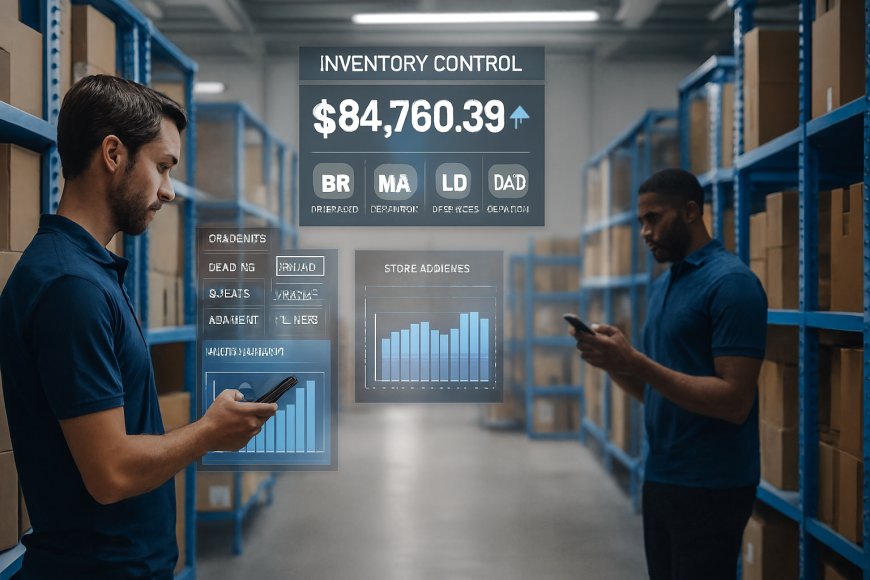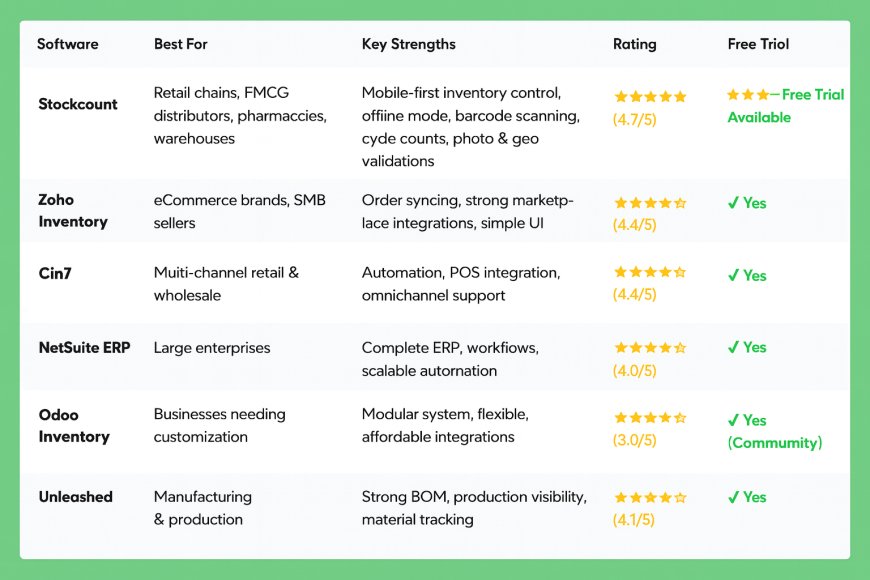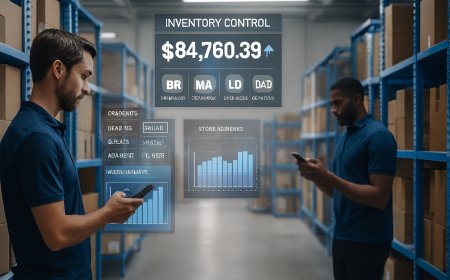Top Inventory Control Software in 2026: The Complete Comparison Guide
Discover the top inventory control software for 2026 with a full comparison of features, pricing, strengths, and best use cases. Ideal for retail, FMCG, and warehouses.

Managing stock in 2026 is no longer about spreadsheets, manual counts, or barcode scanners tied to old hardware. Every brand , from supermarkets to warehouses to D2C fulfillment hubs, demands real-time inventory visibility.
This has pushed businesses to adopt smart, cloud-based inventory control software that automates counting, tracking, reordering, and stock audits.
In this guide, we break down the top inventory control software in 2026, their strengths, weaknesses, ideal use cases, and pricing insights.
1. Stockount — Best for Real-Time Stock Audits & Mobile Inventory Control
Why it stands out in 2026
Stockount is a mobile-first inventory control platform designed for fast, accurate, and audit-ready stock management. With offline support, barcode scanning, geo-tagged entries, and photo validations, it meets the demands of modern retail, FMCG distributors, and high-volume warehouses.
Highlights
-
100% Mobile-First Platform: Teams can manage inventory using any smartphone — no handheld terminals or special hardware required.
-
Offline-Ready Audits: Works even in basements, warehouse corners, or network-restricted areas.
-
Barcode, QR & Product Code Scanning: Fast and accurate item identification for cycle counts and full audits.
-
Photo & Geo-Validation: Adds visual and location proof to every entry, improving trust and accountability.
-
Real-Time Multi-Location Dashboard: Central visibility across stores, warehouses, and distribution hubs.
-
Custom SOP Workflows: Tailored audit processes that match each business’s operational style.
-
Automated Scheduling: Ensures teams never miss cycle counts or periodic audits.
-
Easy Team Adoption: Simple interface, minimal training, and fast onboarding.
Limitations
-
iOS App Under Development: Stockount is currently available on Web & Android; iOS is in progress.
-
Not a Full ERP System: Built specifically for audits, cycle counts, and inventory accuracy — not finance, HR, or complete order management.
-
AI Features Expanding: AI-based predictions, discrepancy detection, and smart insights are under rollout, currently available in limited beta.
Best For: Retail chains, FMCG distributors, pharmacies, warehouses, and operational teams that need audit-backed, real-time inventory accuracy.
Try Stockount free — simplify cycle counts and eliminate mismatch errors.
2. Zoho Inventory — Best for Small Business Order + Inventory Sync
Highlights
-
Order management + basic inventory
-
Integrations with Zoho apps
-
Multi-channel sync
-
Good for eCommerce sellers
Limitations
-
Not built for heavy audits
-
Mobile scanning is limited
-
Not ideal for large warehouses
3. Cin7 — Best for Multi-Channel Retail & Wholesale
Highlights
-
Omnichannel inventory
-
POS + WMS + 3PL flows
-
Advanced automation
Limitations
-
Expensive for SMBs
-
Complex setup
4. NetSuite ERP — Best for Enterprise-Level Inventory Control
Highlights
-
Complete ERP with finance + inventory
-
Deep automation
-
Supports large-scale operations
Limitations
-
Long implementation time
-
High cost
-
Requires trained team
5.Odoo Inventory — Best Open-Source Inventory System
Highlights
-
Modular + open-source
-
Affordable
-
Integrates with accounting, CRM, POS
Limitations
-
Requires customization
-
Mobile scanning not advanced
6. Sortly — Best for Simple Visual Inventory Control
Highlights
-
Very easy to use
-
Visual item tracking
-
Good for small teams
Limitations
-
Not suitable for retail chains
-
Limited automation
7. Unleashed — Best for Manufacturing Inventory
Highlights
-
BOM management
-
Production tracking
-
Good for food, beverages, and manufacturing
Limitations
-
Not an audit-focused tool
-
Requires training for teams
Which Software Is Best for Your Business in 2026?
Every business has different inventory challenges. This snapshot comparison highlights which platform aligns best with your workflow and goals.

Final Observation
Inventory control in 2026 isn’t just about counting items, it’s about staying agile, audit-ready, and insight-driven. Businesses now expect systems that deliver fast, reliable, mobile accessibility and adapt to real-world operations, not rigid workflows.
Whether you’re running multiple stores, managing distributed warehouses, or scaling a supply chain, the right inventory control system directly influences your accuracy, team efficiency, and decision-making power.
For teams that prioritize speed, reliability, and field mobility, platforms like Stockount offer a meaningful advantage, allowing accurate data capture anywhere, anytime, without relying on bulky hardware or complicated ERP systems.
In the end, the best software isn’t the one with the most features, it’s the one your team can confidently use every day.










































